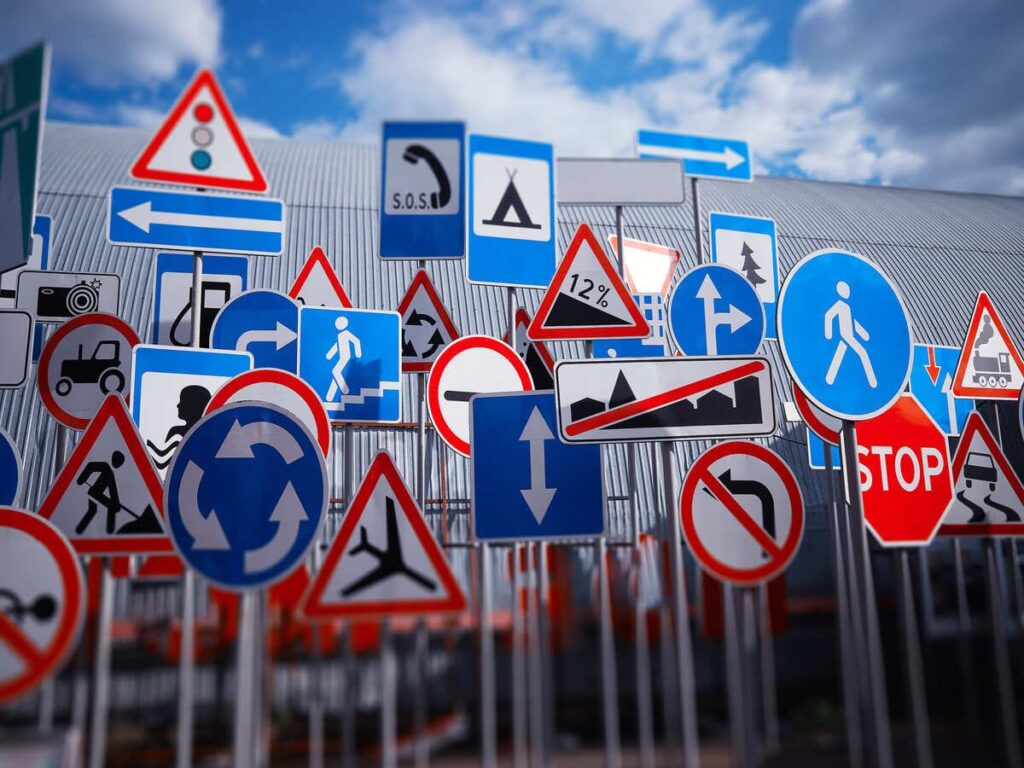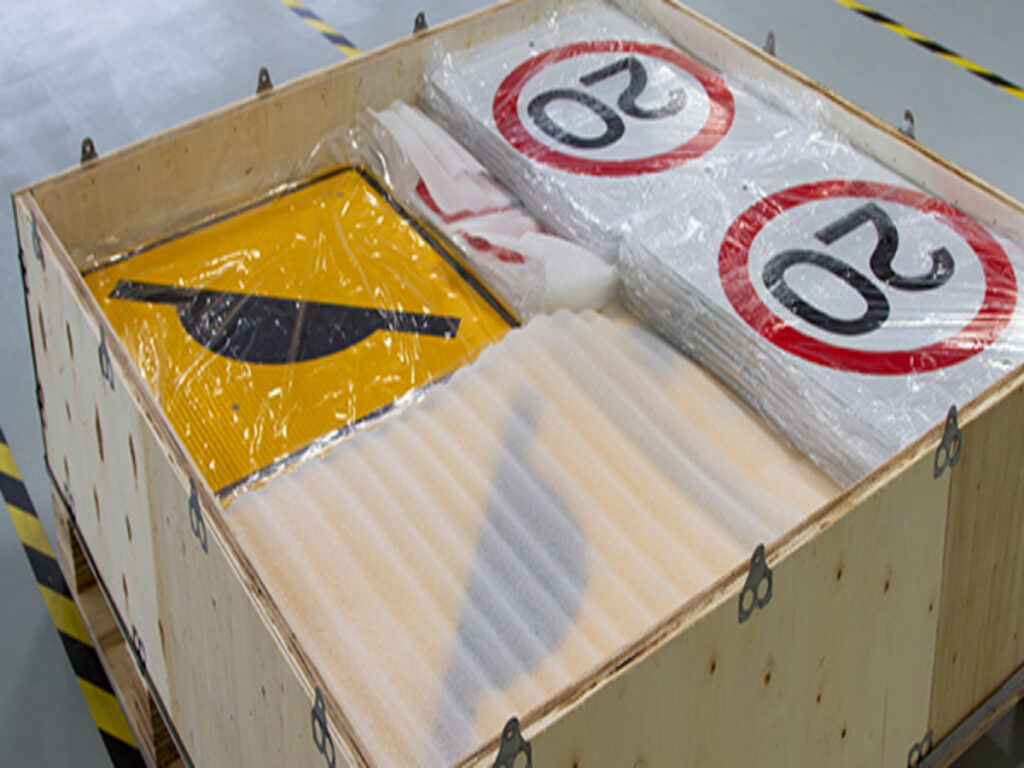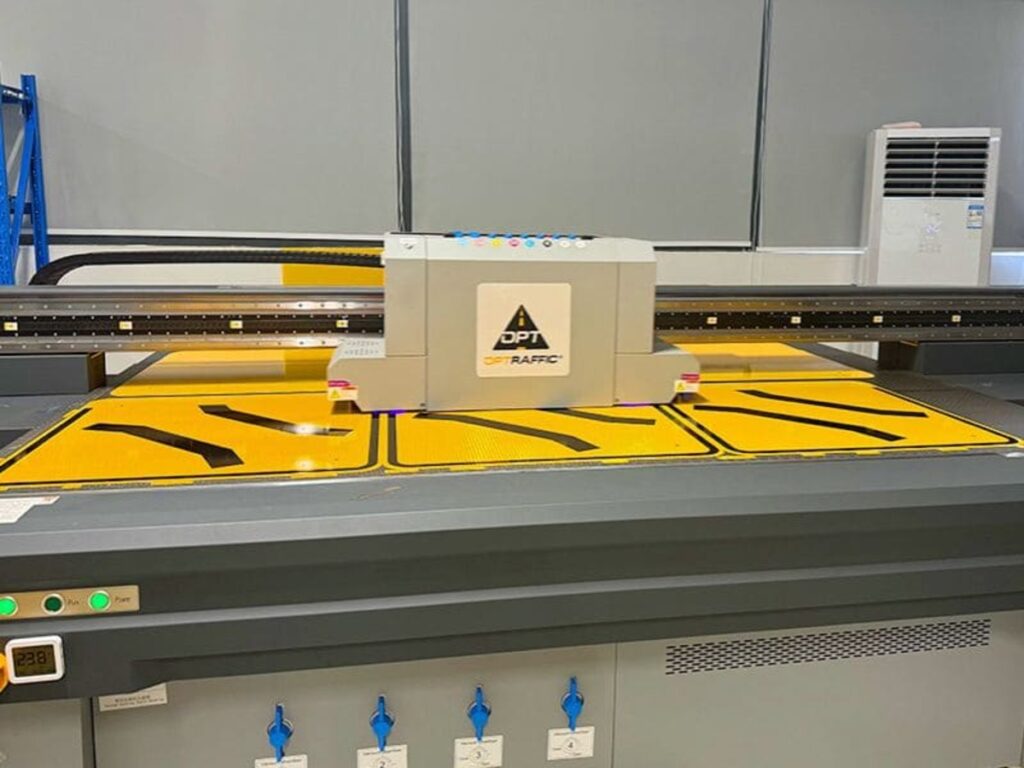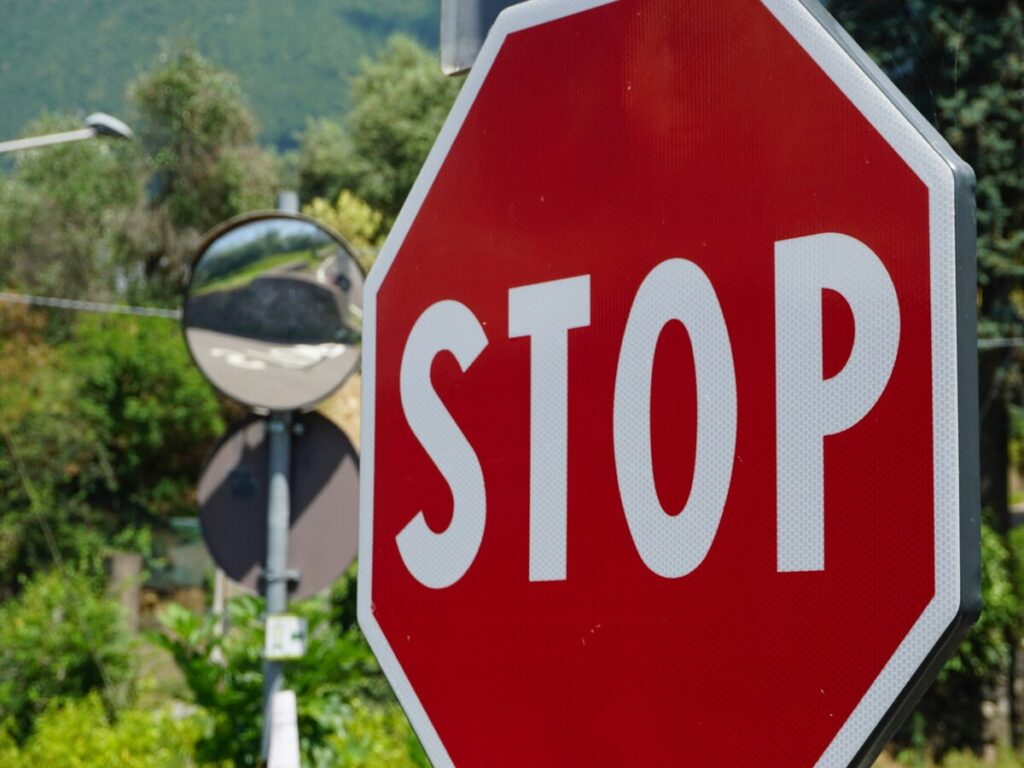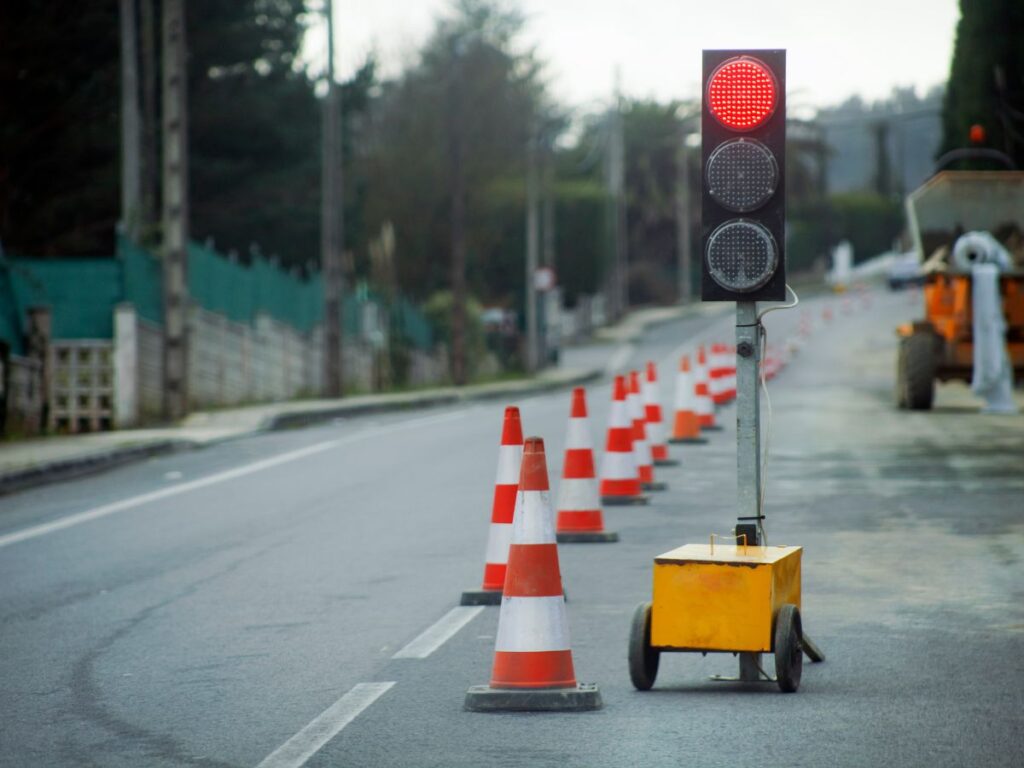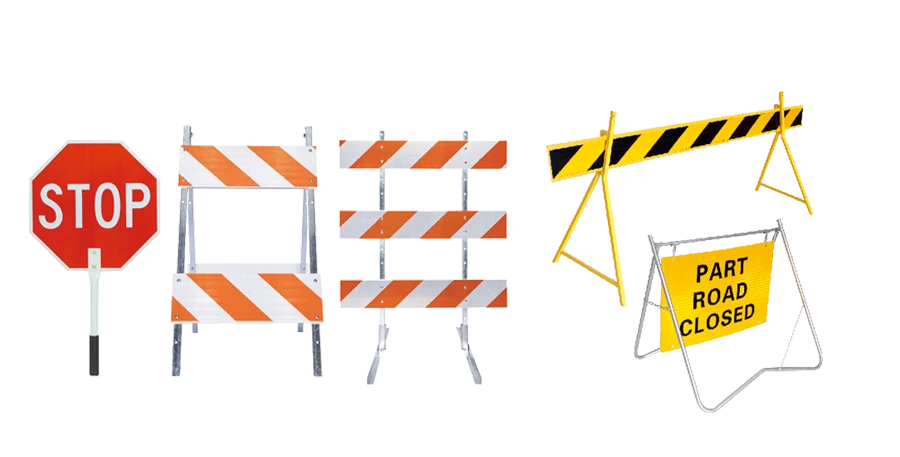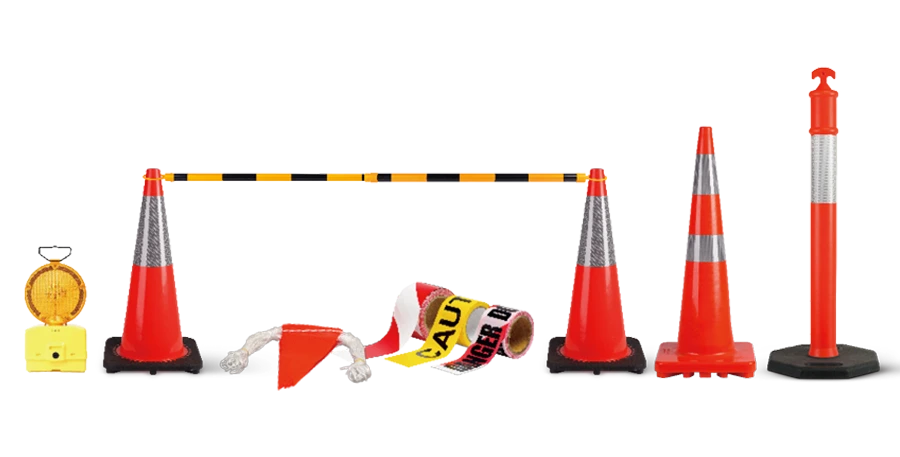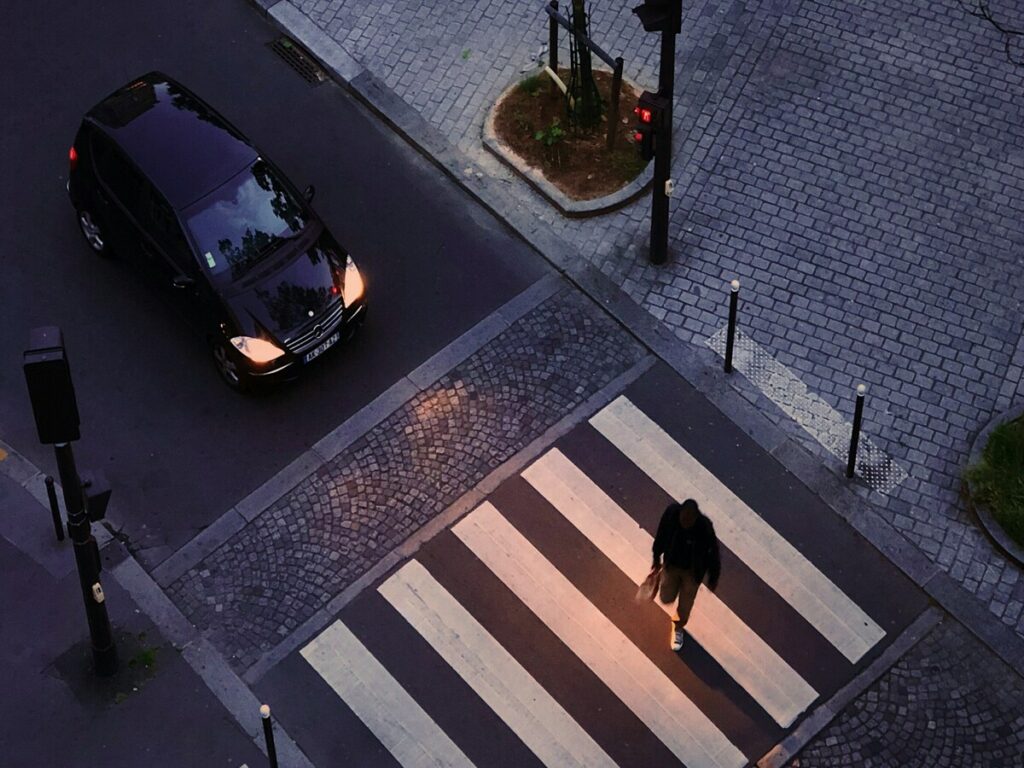
Verkehrszahlen spielen eine wichtige Rolle bei der Sicherheit und Organisation von Straßen. Diese Geräte leiten Fahrzeuge und Fußgänger, indem sie Fahrspuren markieren, Grenzen, oder Sperrgebiete. Sie sehen sie oft auf Autobahnen, Bauzonen, oder Veranstaltungsorte, Gewährleistung eines reibungslosen Verkehrsflusses und Reduzierung von Unfällen. Es gibt zwei Hauptinstallationsmethoden: fest und vorübergehend. Bei Festinstallationen werden langlebige Materialien wie Stahl oder Beton verwendet, sie ideal für den langfristigen Gebrauch machen. Temporäre Installationen, auf der anderen Seite, sind leicht und flexibel, für kurzfristige Bedürfnisse konzipiert. Der Hauptunterschied liegt in ihrem Zweck – feste Optionen bieten Beständigkeit, während vorübergehende Anpassungsfähigkeit bieten.
Key Takeaways
- Verkehrsleitschilder sind wichtig für die Sicherheit und Ordnung auf den Straßen.
- Feste sind stark und stabil, ideal für den Langzeitgebrauch.
- Temporäre Modelle sind leicht und einfach zu bewegen, gut für kurzfristige Bedürfnisse.
- Die Auswahl des richtigen Typs hängt vom Standort ab, Verkehr, und Wetter.
- Beide Arten benötigen regelmäßige Pflege, um nützlich und sicher zu bleiben.
Feste Installation: Stabilität und Haltbarkeit
Installationsprinzipien
Feste Installationen erfordern eine sorgfältige Vorbereitung, um eine langfristige Stabilität zu gewährleisten. Sie müssen mit der Vorbereitung des Bodens beginnen, Dazu gehört oft auch das Nivellieren und Verstärken der Oberfläche. Anschließend wird die Verkehrsleiteinrichtung durch Methoden wie Einbetonieren oder Verankern im Boden gesichert. Diese Schritte schaffen ein starkes Fundament, das den Kräften und Einflüssen der Umwelt standhält.
Bei Festinstallationen spielen die verwendeten Materialien eine entscheidende Rolle für deren Haltbarkeit. Hier finden Sie eine Aufschlüsselung gängiger Materialien und ihrer Eigenschaften:
| Materialtyp | Beschreibung |
|---|---|
| PVC | Langlebig und flexibel, beständig gegen Witterungseinflüsse und Stöße. |
| Hochdichte Polyethylen | Bietet Flexibilität und Haltbarkeit. |
| Metall | Bietet Stärke und Stabilität. |
Zusätzlich, Die Komponenten einer festen Verkehrsleiteinrichtung sind auf maximale Belastbarkeit ausgelegt:
| Besonderheit | Beschreibung |
|---|---|
| Beitragsmaterial | Polyethylen, bekannt für Flexibilität und Haltbarkeit. |
| Scharniermaterial | Naturkautschuk, Bietet Widerstandsfähigkeit und die Fähigkeit, nach einem Aufprall wieder aufzurichten. |
| Grundmaterial | Polycarbonat, was für mehr Stabilität und Stärke sorgt. |
Diese Materialien und Designs stellen sicher, dass feste Installationen über einen langen Zeitraum wirksam bleiben.
Anwendbare Szenarien
Feste Verkehrsleitschilder sind ideal für Situationen, in denen langfristige Lösungen erforderlich sind. Sie finden sie in:
- Bauzonen, wo sie klare Grenzen setzen und die Arbeitnehmer schützen.
- Autobahnen und Autobahnen, wo sie Fahrspuren trennen und Gefahren markieren.
- Städtische Gebiete, Dort erhöhen sie die Fußgängersicherheit und definieren Fahrradwege.
- Parkplätze und Wohngebiete, Dort organisieren sie den Verkehrsfluss und die Parkplätze.
Diese Anwendungen unterstreichen die Vielseitigkeit und Zuverlässigkeit fester Installationen bei der effektiven Verkehrssteuerung.
Wissenschaftliche Prinzipien
Stabilität und Windwiderstand
Die Wissenschaft hinter festen Installationen konzentriert sich auf Stabilität und Widerstandsfähigkeit gegenüber äußeren Kräften. Wenn ein Verkehrsleitschild sicher am Boden befestigt ist, es gewinnt an körperlicher Stabilität, Dadurch kann es Kräften wie Wind und Fahrzeugstößen standhalten. Der Schwerpunkt des Leitpfostens wird tiefer, und die Reibung zwischen der Basis und der Oberfläche nimmt zu, Verbesserung seiner Fähigkeit, an Ort und Stelle zu bleiben.
Der Installationsprozess nutzt physikalische Prinzipien wie Hebelwirkung und Stützpunkte, um einen maximalen Kontakt zwischen dem Leitpfosten und dem Boden sicherzustellen. Dies erhöht die Stabilität und verhindert ein Verrutschen bei starkem Wind oder beim Aufprall auf ein Fahrzeug. Die Reibungskraft zwischen der Basis und dem Boden erhöht den Bewegungswiderstand, Dadurch ist es weniger wahrscheinlich, dass der Leitpfosten durch äußere Kräfte wie Wind oder Stöße verschoben wird.
Dynamik der Luftströmung spielen auch eine Rolle für den Windwiderstand fester Leitpfosten. Durch optimierte Konstruktionen kann der Luftwiderstand am Leitpfosten reduziert werden, sodass es stärkeren Winden standhält. Windkanaltests wird häufig verwendet, um zu messen, wie unterschiedliche Formen von Leitpfosten auf unterschiedliche Windgeschwindigkeiten reagieren, stellen sicher, dass sie auch unter schwierigen Bedingungen an Ort und Stelle bleiben.
Schlagfestigkeit
Die Schlagfestigkeit fester Leitpfosten wird stark von deren Materialzusammensetzung und struktureller Festigkeit beeinflusst. Diese Leitpfosten bestehen häufig aus hochfesten Materialien wie PVC, Polyurethan, oder Stahl, die die Energie von Fahrzeugkollisionen absorbieren und ableiten sollen.
Das wissenschaftliche Prinzip dahinter ist das Stress-Dehnungs-Beziehung von Materialien. Wenn es äußeren Kräften ausgesetzt ist, Materialien verformen sich entsprechend ihrer Elastizität oder Plastizität. Hochschlagfeste Materialien mit größerer Duktilität oder Zähigkeit können die Energie einer Kollision absorbieren, ohne zu brechen oder sich zu verschieben. Zusätzlich, Ermüdungsfestigkeit ist ein wichtiger Faktor; Materialien wie TPU (thermoplastisches Polyurethan) werden aufgrund ihrer Fähigkeit ausgewählt, nach mehreren Stößen wieder in ihre ursprüngliche Form zurückzukehren, Verlängerung der Lebensdauer des Leitpfostens.
Diese Materialien widerstehen nicht nur direkten Kollisionen, sondern minimieren auch Schäden an der Leitlinie und der umgebenden Infrastruktur. Bei der Gestaltung fester Leitpfosten werden Faktoren wie Energieaufnahmevermögen und Materialbelastbarkeit berücksichtigt, Dies macht sie zu einer effektiven Lösung in Bereichen mit hohem Fahrzeugverkehr oder in Baustellen.
Indem wir diese Prinzipien verstehen, Sie sehen, warum Festinstallationen eine zuverlässige Wahl für das langfristige Verkehrsmanagement sind.
Temporäre Installation: Flexibilität und Effizienz
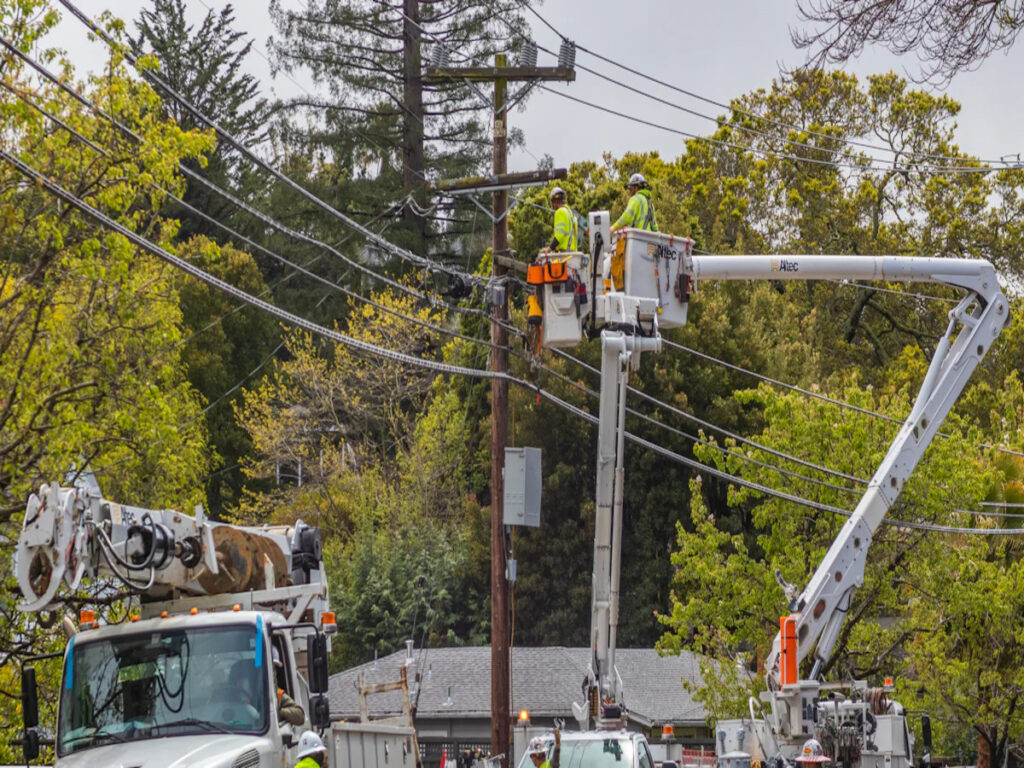
Installationsprinzipien
Temporäre Verkehrsleitschilder sind für eine schnelle und effiziente Einrichtung konzipiert. Sie können sie installieren, ohne dass schwere Werkzeuge oder komplexe Geräte erforderlich sind. Leichte Materialien wie PVC oder hochdichtes Polyethylen machen diese Leitpfosten einfach zu handhaben. Viele Modelle verwenden abnehmbare Stützen, Klebebasen, oder magnetische Aufsätze, So können Sie sie in wenigen Minuten bereitstellen.
Um Sicherheit und Wirksamkeit zu gewährleisten, Befolgen Sie bei der Installation die wichtigsten Grundsätze. Beginnen Sie mit der Definition Ihrer Verkehrskontrollziele. Wählen Sie Leitpfosten, die der erforderlichen Höhe entsprechen, Größe, und Langlebigkeit für die Umwelt. Beachten Sie immer die örtlichen Vorschriften und beachten Sie Richtlinien wie die Handbuch zu einheitlichen Verkehrskontrollgeräten (MUTCD). Leichte Designs verbessern die Tragbarkeit, während helle Farben die Sichtbarkeit für Fahrer und Fußgänger verbessern.
Anwendbare Szenarien
Temporäre Installationen eignen sich hervorragend für kurzfristige oder Notfallsituationen. Sie werden sie oft an Veranstaltungsorten sehen, wo sie temporäre Fahrspuren schaffen, Direkte Fahrzeuge, und Kontrollzugriffspunkte. Sie sind auch in Katastrophenschutzgebieten von entscheidender Bedeutung, Helfen dabei, gefährliche Bereiche abzusperren und Fahrzeuge von der Gefahr fernzuhalten.
Auf Baustellen werden häufig temporäre Leitplanken eingesetzt, um den Verkehrsfluss zu steuern und die Arbeiter zu schützen. Diese Anlagen eignen sich auch ideal für Notreparaturen oder Umleitungen an Straßen, Gewährleistung der Sicherheit bei gleichzeitiger Minimierung von Störungen. Ihre Flexibilität ermöglicht eine schnelle Anpassung an veränderte Bedingungen.
Wissenschaftliche Prinzipien
Gleichgewicht und Anpassungsfähigkeit
Das Grundprinzip temporärer Installationen ist ihre Fähigkeit, Stabilität und Flexibilität in Einklang zu bringen. Im Gegensatz zu festen Installationen, die auf eine Verankerung im Boden angewiesen sind, Temporäre Leitpfosten müssen leicht und anpassungsfähig sein und gleichzeitig robust genug, um Stößen standzuhalten. Materialien wie Polyethylen (Pe) Und Naturkautschuk werden häufig verwendet aufgrund ihrer Elastizität Und Schlagfestigkeit. Diese Materialien können sich beim Aufprall verformen und dann wieder in ihre ursprüngliche Form zurückkehren, Sicherstellen, dass der Leitpfosten auch nach einem Umstoß oder einer Verschiebung aufrecht und funktionsfähig bleibt.
- Wissenschaftliches Prinzip: Der elastische Verformung aus Materialien wie Polyethylen und Gummi ermöglichen es ihnen, Aufprallenergie zu absorbieren, indem sie vorübergehend ihre Form ändern, erholen sich dann, wenn die Kraft wegfällt. Diese Eigenschaft ist entscheidend für die Gewährleistung der Langlebigkeit und fortgesetzten Funktionalität temporärer Installationen nach Kollisionen oder Windkräften. Dieses Verhalten wird geregelt durch Hookes Gesetz, Dies besagt, dass die zur Verformung eines Materials erforderliche Kraft proportional zum Ausmaß der Verformung ist, bis zu einer gewissen Grenze.
Stabilität und Gewichtsverteilung
Obwohl temporäre Leitpfosten leichtgewichtig sind, ihre Stabilität wird durch verstärkt richtige Gewichtsverteilung. Um ein Umkippen zu verhindern, Die Basis des Leitpfostens ist häufig beschwert oder auf einer breiteren Grundlage ausgelegt. Materialien wie z sandgefüllte Polyethylenbasen oder beschwerte Gummifüße Stellen Sie sicher, dass der Leitpfosten auch bei Wind oder beim Anfahren durch Fahrzeuge stabil bleibt. Das Gewicht an der Unterseite des Geräts hilft dabei, es abzusenken Schwerpunkt, was Widerstand gegen Kippkräfte bietet.
- Wissenschaftliches Prinzip: Das Konzept von Schwerpunkt Und Trägheitsmoment spielt eine entscheidende Rolle für die Stabilität. Je tiefer der Schwerpunkt, desto geringer ist die Wahrscheinlichkeit, dass der Leitpfosten umkippt. Zusätzlich, desto breiter die Basis, je höher die Trägheitsmoment, das einer Rotationsbewegung widersteht (Kippen). Diese Grundsätze sind unerlässlich, um sicherzustellen, dass temporäre Installationen äußeren Kräften standhalten können, B. Windböen oder Fahrzeugkollisionen, ohne umzukippen.
Windwiderstand und Stoßdämpfung
Temporäre Verkehrsleitschilder werden häufig in Umgebungen mit hohem Verkehrsaufkommen angebracht Wind oder Fahrzeugaufprall, wie Bauzonen oder Hochverkehrsgebiete. Um diese Bedingungen anzugehen, Das Design temporärer Leitpfosten umfasst typischerweise aerodynamische Formen und flexible Materialien, die Kräfte absorbieren und umleiten können. Zum Beispiel, Einige Leitpfosten sind mit ausgestattet solarbetriebene Blinklichter oder reflektierende Einsätze um die Sicht zu verbessern und gleichzeitig den Windwiderstand gering zu halten.
- Wissenschaftliches Prinzip: Der Windwiderstand wird dadurch minimiert aerodynamisches Design. Stromlinienförmige Leitpfosten reduzieren den Luftwiderstand und die vom Wind ausgeübte Kraft, wodurch sie weniger anfällig dafür sind, umgestoßen zu werden. Der Bernoulli-Prinzip kommt auch ins Spiel: Stromlinienförmige Formen sorgen dafür, dass die Luft gleichmäßig um das Objekt strömt, Reduzierung des Druckunterschieds, der andernfalls zum Umkippen des Leitpfostens führen würde. Zusätzlich, Stoßdämpfung Bei temporären Leitplanken wird dies häufig durch sichtbare Materialien erreicht viskoelastisches Verhalten, Das bedeutet, dass sie kinetische Energie von Stößen absorbieren und diese allmählich abführen können, Reduzierung des Schadensrisikos.
Durch die Nutzung von Prinzipien wie elastische Verformung, Schwerpunkt, Und Aerodynamik, Temporäre Verkehrsleitschilder sorgen für Gleichgewicht, Haltbarkeit, und Anpassungsfähigkeit, um effektive Verkehrsmanagementlösungen bereitzustellen. Das Verständnis dieser wissenschaftlichen Prinzipien ermöglicht es Ingenieuren und Verkehrssicherheitsexperten, den Einsatz temporärer Leitpfosten in einer Vielzahl von Szenarien zu optimieren, Gewährleistung von Sicherheit und Effizienz in der Dynamik, sich ständig verändernde Umgebungen.
Vergleich von Fest vs. Temporäre Installationen
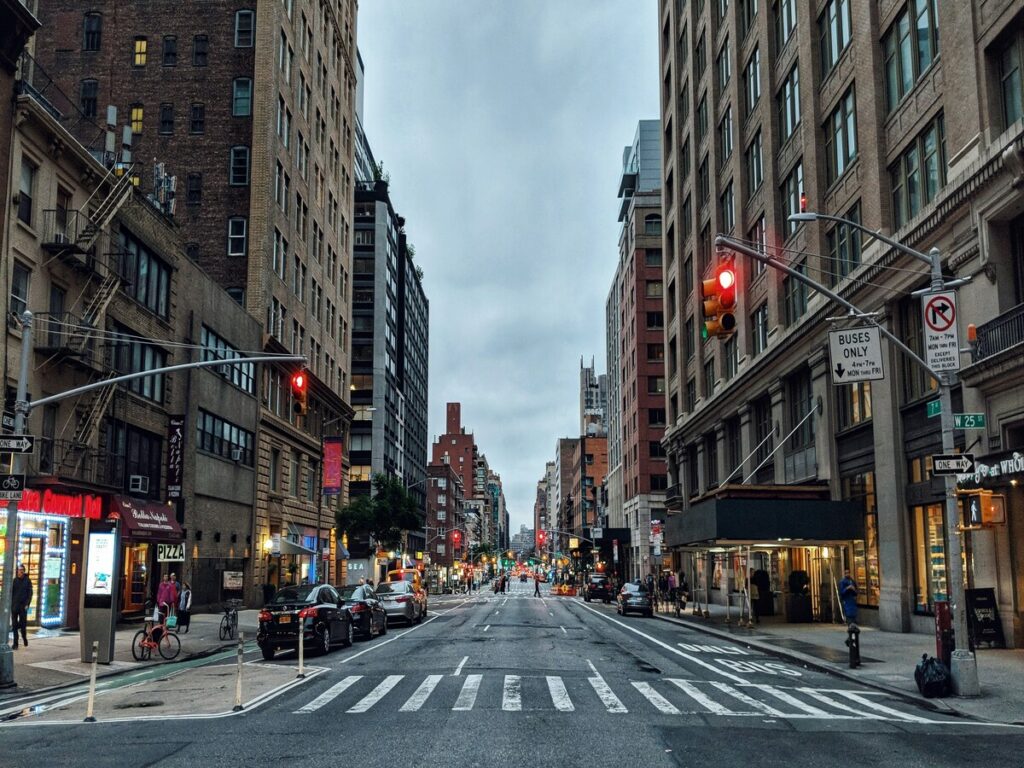
Installationsschwierigkeiten und Zeitaufwand
Feste Installationen erfordern mehr Aufwand und Zeit. Sie müssen den Boden vorbereiten, Sichern Sie die Basis, und verwenden häufig Werkzeuge wie Bohrer oder Betonmischer. Dieser Prozess gewährleistet Stabilität, erfordert jedoch qualifizierte Arbeitskräfte und Planung. Temporäre Installationen, auf der anderen Seite, sind viel schneller. Mit leichten Materialien und einfachen Trägern wie Klebesockeln oder magnetischen Befestigungen können Sie sie in wenigen Minuten aufstellen. Diese Optionen sparen Zeit und ermöglichen es Ihnen, sich ohne schweres Gerät an veränderte Anforderungen anzupassen.
Lebensdauer und Wartungsanforderungen
Feste Verkehrsleitschilder sind auf Langlebigkeit ausgelegt. Ihre dauerhaften Materialien, wie Metall oder hochdichtes Polyethylen, widerstehen rauem Wetter und wiederholten Stößen. Der Wartungsaufwand ist minimal, Oftmals beschränken sie sich auf die Reinigung oder den Austausch reflektierender Oberflächen. Temporäre Begrenzungslinien, dabei flexibel, haben eine kürzere Lebensdauer. Häufiges Umpositionieren und Einwirkung äußerer Kräfte kann zu Verschleiß führen. Möglicherweise müssen Sie sie häufiger ersetzen, vor allem in Gebieten mit hohem Handel. Jedoch, Ihre einfache Einrichtung gleicht diese Einschränkung in kurzfristigen Szenarien aus.
Vergleich von Sicherheit und Wirksamkeit
Sowohl feste als auch temporäre Leitpfosten erhöhen die Sicherheit, aber ihre Wirksamkeit hängt von der Situation ab. Feste Leitpfosten sind ideal für den Langzeiteinsatz. Ihre Haltbarkeit und reflektierenden Oberflächen verbessern die Sichtbarkeit in Baustellen oder als permanente Fahrbahnmarkierung. Temporäre Optionen, wie Verkehrskegel, zeichnen sich durch kurzfristige Setups aus. Aufgrund ihrer Tragbarkeit eignen sie sich perfekt für Straßenreparaturen oder Veranstaltungen. Beide Typen führen Fahrer und Fußgänger effektiv, insbesondere bei schlechten Lichtverhältnissen. Die Wahl der richtigen Option gewährleistet optimale Sicherheit und Navigation.
Die Wahl zwischen festen und temporären Verkehrsleiteinrichtungen hängt von Ihren spezifischen Anforderungen ab. Feste Installationen bieten Langlebigkeit und Stabilität, Damit eignen sie sich ideal für langfristige Anwendungen wie den Straßenbau oder die Parkplatzbewirtschaftung. Temporäre Installationen bieten Flexibilität und schnelle Einrichtung, Perfekt für Veranstaltungen oder Notfall-Straßenreparaturen.
Um die richtige Wahl zu treffen, Berücksichtigen Sie Schlüsselfaktoren wie den Standort, Verkehrsaufkommen, und Umweltbedingungen. Dauerhaft OptionSigns -Abläufe Funktioniert am besten auf Autobahnen oder bei rauem Wetter, während leichte Optionen ideal für städtische Gebiete oder temporäre Einrichtungen sind. Befolgen Sie immer die örtlichen Vorschriften und wählen Sie Materialien aus, die den Kosten gerecht werden, Wartung, und Sicherheit.
FAQ
Woraus werden Verkehrsgrößen gemacht??
Für Verkehrsleitschilder werden typischerweise Materialien wie PVC verwendet, Hochdichte Polyethylen, oder Metall. Diese Materialien sorgen für Langlebigkeit, Flexibilität, und Beständigkeit gegen Witterungseinflüsse und Stöße. Einige Modelle verfügen außerdem über reflektierende Oberflächen für bessere Sichtbarkeit bei Nacht oder schlechten Lichtverhältnissen.
Wie wählen Sie zwischen festen und temporären Installationen??
Berücksichtigen Sie die Dauer und den Zweck Ihres Projekts. Feste Installationen eignen sich am besten für langfristige Anforderungen wie Autobahnen oder Baustellen. Temporäre Installationen eignen sich für kurzfristige Installationen wie Veranstaltungen oder Notfallreparaturen. Bewerten Sie das Verkehrsaufkommen, Umweltbedingungen, und örtliche Vorschriften, bevor Sie eine Entscheidung treffen.
Können temporäre Leitpfosten rauem Wetter standhalten??
Ja, Viele temporäre Leitpfosten bestehen aus langlebigen Materialien wie Polyethylen und Gummi. Diese Materialien widerstehen Wind und leichten Stößen. Jedoch, Ihre leichte Bauweise hält extremen Wetterbedingungen möglicherweise nicht so effektiv stand wie feste Installationen. Die richtige Platzierung und sichere Untergründe verbessern ihre Stabilität.
Sind Festinstallationen teurer als temporäre Installationen??
Feste Installationen kosten aufgrund langlebiger Materialien und arbeitsintensiver Einrichtung oft mehr. Temporäre Verkehrsleitschilder sind kostengünstiger und einfacher zu installieren. Jedoch, Der häufige Austausch temporärer Optionen kann mit der Zeit zu höheren Kosten führen. Wählen Sie basierend auf Ihrem Budget und der Projektdauer.
Erfordern sich die Verkehrsgrößen für die Wartung??
Ja, Sowohl feste als auch temporäre Verkehrsleitschilder müssen gewartet werden. Bei festen Modellen ist eine gelegentliche Reinigung und ein Austausch der reflektierenden Oberfläche erforderlich. Temporäre Leitpfosten müssen aufgrund von Abnutzung möglicherweise neu positioniert oder ersetzt werden. Regelmäßige Inspektionen stellen sicher, dass sie für das Verkehrsmanagement effektiv und sicher bleiben.

